General
April 15, 2011 1:24 pm
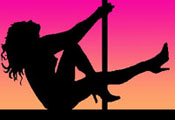 As I continually explore woman’s issues and look for ways in which my art and my life can be spent promoting healthier images and outlooks of women I am constantly looking into reasons and root causes for existing unhealthy attitudes towards women.
As I continually explore woman’s issues and look for ways in which my art and my life can be spent promoting healthier images and outlooks of women I am constantly looking into reasons and root causes for existing unhealthy attitudes towards women.
I so often find that one of the biggest fingers that gets pointed is at strip clubs.
I grew up in a fairly small town. There were a couple of strip clubs nearby. I knew a few girls growing up who worked in them. These girls weren’t prostitutes, they probably weren’t forced or coerced into doing what they did. It was a high paying though albeit somewhat slimy way to make money. Most of them didn’t have any love for it but enjoyed the money it brought in. Many were using it to pay for college or launch some other career.
The security was good and the no touching rules strictly enforced. I am not naive enough to say there weren’t incidents or there weren’t things going on there such as prostitution but from the girls I knew it certainly didn’t seem the norm.
It didn’t seem like a place where men were going to look at women as objects. It seemed like a place where the guys would go once in a while to drink with buddy’s and be around beautiful women. The dancers talked with us in between shifts and they danced. It was all harmless or so I thought, everyone went home after. Perhaps this was totally naive on my part or perhaps things were really a little different there.
Where men objectifying women there? Undoubtedly, but it didn’t seem the majority. Was I? I don’t think so. I think even at that young of an age my turn on’s were more romantic, intellectual, artistic and less object centric. Perhaps that’s the reason for my outlook on these places at the time as ‘not so bad’. Maybe I just wasn’t really seeing what was going on. Maybe I had an idealized and romanticized vision of these places, as I did the women that worked in them. I certainly wasn’t there enough to analyze them in depth, maybe once a year if that or even less.
I can’t say I’ve been to very many strip clubs in New York City. By the time I moved here I think my views of women were already growing more and more respectful. Makeup, and high heels were quickly becoming turn off’s and sexuality was becoming something more intimate and interpersonal. What these places had to offer became less and less appealing to me.
In the 90’s with the exception of a few, mayor Juliani pushed most of the strip clubs out of Manhattan. Many landed in Long Island City Queens. Just blocks from where my art studio is currently located. I have not been in any of these nor do I have any desire to. I have seen prostitution in the area (though it is cleaning up significantly) . I know the effect strip clubs have. I know they are also a far cry from the strip clubs I grew up around in small town CT.
Its a bit difficult and challenging for me to be the guy who would speak out against such things. Having grown up with such a ‘its harmless guy fun’ view of these places. Many of my male friends who are good guys might still attend strip clubs. I’m very liberal and don’t want to be the conservative guy putting the kabosh on someone’s harmless fun.
Unfortunately its not ‘harmless fun’ Its pretty undeniable strip clubs are a place where men go to objectify women. I stand firmly against the objectification of women. Strip clubs are places that foster prostitution which in turn supports the trafficking of women and young girls. I stand firmly against these things as well. The women that work at strip clubs are not objects, they are daughters, sisters, mothers, friends and most importantly they are people.
Ok so if I speak out against strip clubs am I a hypocrite? I paint nude women. Whats the difference?
Well you could say its a fine line but I really don’t think so though. I don’t think any of my work is sexual in nature and for any and all criticisms I have taken, I have to say except for people who view any nudity as always sexual I have never heard of my work refereed to as such. I don’t think my work objectifies or supports the objectification of women. I certainly don’t look at my models as ‘objects’ as a matter of fact I go out of my way not to.
So with hope for future generations of young men that will not grow up frequenting strip clubs and fostering attitudes of objectification, I speak out against strip clubs, I join the finger pointing and begin the effort to address these institutions and the attitudes they help to promote.
April 15, 2011 12:09 pm
So often as artists we here “You’ll be famous when you die” or “Your art will be worth a lot of money when you die”. Its a common misconception, and often a joke, that artists all live in poverty and obscurity until after their deaths when their work is suddenly discovered and realized for its value.
As a younger artist for many years I held this belief as well. As I started getting out more in the art world, going to shows and keeping up with art related news, I began to realize there are many very talented painters alive, well and significantly recognized for their work.
Here is a list of some of my favorite living artists. Enjoy!
1. Lisa Yuskavage
www.davidzwirner.com
Lisa Yuskavage on Facebook
2. Nicoletta Thomas
www.nicoletta.info
3. John Currin
John Currin
John Currin on Facebook
4. Fabian Perez
www.fabianperez.com
Fabian Perez on Facebook
5. Inka Essinghigh
inka-essenhigh.com
Inka Essinghigh on Facebook
6. Jia Lu
Jia Lu
7. Margret Dyer
www.margaretdyer.com
8. Bill Mack
www.billmack.com
Bill Mack on Facebook
9. Xenia Hausner
www.xeniahausner.de
10. Craig Srebnik
csfineart.com
February 9, 2011 8:53 pm
 There are times when standing among apparently infinite skyscrapers, apartment buildings, miles of concrete and steel or traveling through seamlessly interconnected subway systems, that it can seem easy to forget, New York City is a collection of islands. With the exception of the Bronx, New York City is surrounded by water on all sides. With all that water comes bridges! and lots of them. There are bridges made of stone, steel, concrete and wood. There are tall bridges, small bridges, long bridges and short bridges. Suspensions, trusses, arches, beams and combination’s of all kinds come together in a complexity almost unfathomable to bring the city together. All of those bridges have brought never ending inspiration to artists of all mediums including painters, photographers, architects, film makers, poets and many others.
There are times when standing among apparently infinite skyscrapers, apartment buildings, miles of concrete and steel or traveling through seamlessly interconnected subway systems, that it can seem easy to forget, New York City is a collection of islands. With the exception of the Bronx, New York City is surrounded by water on all sides. With all that water comes bridges! and lots of them. There are bridges made of stone, steel, concrete and wood. There are tall bridges, small bridges, long bridges and short bridges. Suspensions, trusses, arches, beams and combination’s of all kinds come together in a complexity almost unfathomable to bring the city together. All of those bridges have brought never ending inspiration to artists of all mediums including painters, photographers, architects, film makers, poets and many others.
The first time I crossed a bridge by foot in New York City it was the Williamsburg Bridge walking from the Manhattan side to Brooklyn via the pedestrian walkway. It was easily one of the most powerful experiences I had ever had in the city. As I began making my way across and I toke notice of the massive apartment towers to my left. They seemed so incredibly large looming at 20 stories or more. As I made my way up the gradual walkway I felt a feeling of rising up along side these massive structures. I was in awe that after 10 minutes or so, I had actually risen completely above them, looking down at their roofs from above.
I reached the first tower of the bridge and looked up at its massive structures in absolute disbelief. Its cables suspending from the trussed towers seemed too large to be real. Its lights seemed like runways to the moon. I looked back to the city. To the north I could see all of the city’s lights. I could see land mark buildings like the Empire State Building, Met life Building and the Chrysler Building with their brightly lit and very recognizable tops reaching for the stars in the night sky. I could see the Queensboro Bridge off in the distance. I turned to my left and to the south I saw the Manhattan Bridge, the beautifully lighted Brooklyn Bridge, lower Manhattan and Brooklyn all gloriously shimmering in the nights sky. I continued my walk across, quite overwhelmed by the massiveness of it all. I was completely in love. I wanted to walk all of the city’s bridges, I wanted to walk the bridges of other cities. Though I had crossed this bridge many times by car and train, for the first time I felt finally understood the inspiration and majesty of bridges.
I have since walked most of NYC’s major bridges as well as many smaller bridges, and bridges elsewhere such as the Golden Gate in San Francisco. My favorite is still the Williamsburg bridge because the walkway takes pedestrians above the traffic and trains. It is no secret though, NYC’s favorite has long been the Brooklyn Bridge.
 I recently attended a lecture at the Museum of the City of NY entitled The Brooklyn Bridge as inspiration, gender and the Great Depression and More which coincides with the current exhibition running there Glorious Sky: Herbert Katzman’s New York. The lecture focused on the Brooklyn Bridge and the art it has inspired since construction began on it.
I recently attended a lecture at the Museum of the City of NY entitled The Brooklyn Bridge as inspiration, gender and the Great Depression and More which coincides with the current exhibition running there Glorious Sky: Herbert Katzman’s New York. The lecture focused on the Brooklyn Bridge and the art it has inspired since construction began on it.
Richard Haw author of Art of the Brooklyn Bridge; A Visual history (Rutledge 2008) headed the discussion with the Artist Bascove, photographer Jonathan Smith, and Sean Corcoran curator of prints for the museum.
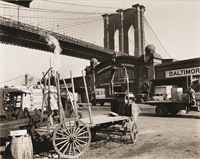 Sean Corcoran reviewed some of the Museums more notable prints of the bridge. His selection of prints was great. A real sense of time was conveyed as the first images of the bridge spires under construction were shown and Sean continued with slides of photographs from its first completion, the great depression and through to modern times. As Sean spoke about the bridges influence on photography I took note of NY’s ever changing skylines in the photographs. It was really amazing to see views of the bridge from places I had stood that were of a completely different time.
Sean Corcoran reviewed some of the Museums more notable prints of the bridge. His selection of prints was great. A real sense of time was conveyed as the first images of the bridge spires under construction were shown and Sean continued with slides of photographs from its first completion, the great depression and through to modern times. As Sean spoke about the bridges influence on photography I took note of NY’s ever changing skylines in the photographs. It was really amazing to see views of the bridge from places I had stood that were of a completely different time.
Museum of New York City Archives
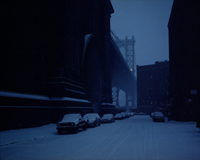 Photographer Jonathan Smith spoke about his “Bridge Project” photographs. Jonathan spoke about the difficulty of coming up with unique images and perspectives of New York City bridges since they are so endlessly photographed. One aspect which makes his work unique is his photographing of some of the cities less popular or well known bridges. He also spoke about some of the difficulties gaining access to some area’s to photograph. Jonathan makes use of objects which sometimes obstruct views of the bridges brilliantly making them one with the composition while not losing a feeling for the bridges. Jonathan’s work is really great. It takes us through time and space as we look at scenes of bridges in various weather, hours of the day, and times of year creating intense mood. Jonathan often juxtaposes the bridges against scenes of decaying piers, changing neighborhoods and people creating dynamic combination’s of the bridges and their surroundings.
Photographer Jonathan Smith spoke about his “Bridge Project” photographs. Jonathan spoke about the difficulty of coming up with unique images and perspectives of New York City bridges since they are so endlessly photographed. One aspect which makes his work unique is his photographing of some of the cities less popular or well known bridges. He also spoke about some of the difficulties gaining access to some area’s to photograph. Jonathan makes use of objects which sometimes obstruct views of the bridges brilliantly making them one with the composition while not losing a feeling for the bridges. Jonathan’s work is really great. It takes us through time and space as we look at scenes of bridges in various weather, hours of the day, and times of year creating intense mood. Jonathan often juxtaposes the bridges against scenes of decaying piers, changing neighborhoods and people creating dynamic combination’s of the bridges and their surroundings.
Johnathan Smith Bridge Project
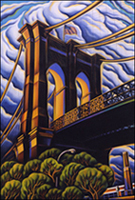 The artist Bascove showed slides of her work of New York’s bridges and spoke about her process. Bascove a more than capable figurative and still life painter has painted many of the cities bridges and has several books of her works of these structures. Bascove’s work is beautifully colored and strikingly lit. Her work is teeming with enegry and excitement. She has a mastery over composition using dramatic perspectives and at times combining multiple angles to create views which challenge viewers to perceive these structures in new and engaging ways. Her lush landscapes coexist with the bridges which convey a sense of nature and man made structures living side by side in perfect harmony.
The artist Bascove showed slides of her work of New York’s bridges and spoke about her process. Bascove a more than capable figurative and still life painter has painted many of the cities bridges and has several books of her works of these structures. Bascove’s work is beautifully colored and strikingly lit. Her work is teeming with enegry and excitement. She has a mastery over composition using dramatic perspectives and at times combining multiple angles to create views which challenge viewers to perceive these structures in new and engaging ways. Her lush landscapes coexist with the bridges which convey a sense of nature and man made structures living side by side in perfect harmony.
Bascove
I was only briefly able to check out the current exhibit of Herbert Katzman’s work of New York skylines but for what I did see I was impressed and it definitely merits a visit back to the museum.
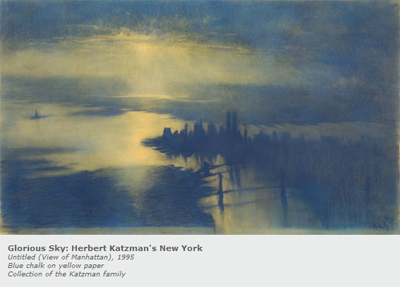
Glorious Sky: Herbert Katzman’s New York
My art at its core is figurative and I believe it always will be but I certainly can appreciate the beauty of bridges in art and in life. Having spent the last 6 years working in a studio shadowed by the Queensboro Bridge and walking it regularly I have certainly considered more than once expressing her in all her beauty through art. Perhaps someday I too will express the art of bridges but for now I stand in appreciation and admiration of those who do.
January 30, 2011 6:26 pm
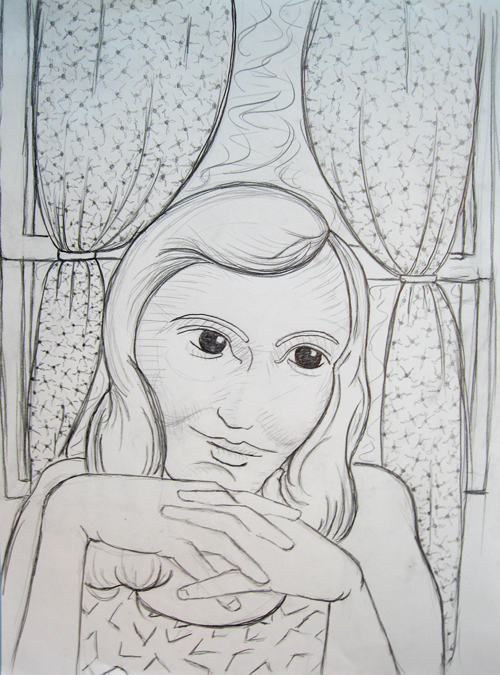
December 23, 2010 8:13 am
 I have started a new blog. Its about my quest for whole health. Since I have enough material and experiences to write about, I’m considering it a whole separate topic from this blog which is centered around things affecting my art. I Will keep a link to both on the right. Enjoy!
I have started a new blog. Its about my quest for whole health. Since I have enough material and experiences to write about, I’m considering it a whole separate topic from this blog which is centered around things affecting my art. I Will keep a link to both on the right. Enjoy!
A Quest for Whole Health
December 18, 2010 11:37 am
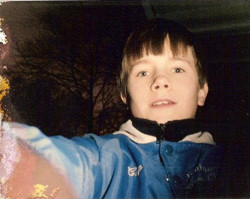
I was probably around 12 years old. One weekend while in K-Mart with my father we passed by the craft supplies. I was checking out a set of paints I really liked. I begged my father to buy them for me. My father said “If you want to paint well, first you have to learn to draw well” I was young and at the time thought of drawing as much less fun
than painting.
I probably had such fun memories of art classes in school where we would have the paints all out in those little plastic dishes. Such beautiful bright colors all at your disposal. We would have so much fun just recklessly applying them to large sheets of paper, getting paint all over the smocks we were forced to wear, the tables, and on our hands. Few school activities were more fun for me.
My father didn’t buy me the paint set I wanted that day. Instead he bought me a pencil set. A very nice one as I remember. Graphite pencils, colored pencils, pencils of different softness’s, big pencils, small pencils, sharpeners, erasers. A real deluxe set. I can say, I wasn’t very happy about not getting the paints but the pencil set was so nice I got over it pretty quickly and became very fond of those pencils.
My father, a talented artist who set aside his pursuit of arts for the honorable task of raising 3 children, knew more than a few things about art at that time. He told me that painting was just drawing with color and different materials. He told me that I should first learn the basics of drawing. He gave me simple drawing exercises. Shade a cube, shade it from different angles, shade cones, spheres, try blending, cross-hatching, 2 & 3 point perspective etc. At the time I didn’t see the value of these but I valued my fathers opinion and his art that I saw around the house, so I listened to him and did the exercises over and over.
As I grew older I heard phrases like “Drawing is the foundation for all art” As I explored other area’s of art I began to see the value of drawing and the principles which it taught me. I found Composition and lighting were essential tools in my exploration of photography, shape and mass were necessary concepts when I tried sculpting. I saw perspective in architecture, light color and composition in cinematography. I began to see the principles I learned in drawing everywhere.
Today I am very much in love with drawing. It is the starting point and foundation for all of my work. I realize I still have much to learn from it and many area’s in which I can improve my drawing and I work at it constantly. I can now see though, improvements in my ability to draw produce direct results in my ability to paint and I firmly believe “If you want to paint well, first you have to learn to draw well” I have my father to thank for this.
November 20, 2010 4:56 pm



I think I first fell in love with and truly began to understand the beauty of line when I was younger and studied Matisse’s and Rembrandt’s drawings. I sat in the library of my local community college for hours on end and just poured over page after page of drawings by these two artists. Others as well but I think it was those two that best communicated to me the power of line in art.
I began to realize that the most subtle of differences in a line could greatly alter the appearance of a work of art. I learned that line weight could also be used to convey different things. I also learned the absence of line could be used as a tool in art. These concepts were further reinforced in my own work by drawing the same drawing over and over and studying the different ways they looked and understanding why they looked different by understanding the differences in their lines.
Most times, though not all, my work is very process orientated. I start with a fairly basic sketch while working with a model. After the model has left I draw those sketches over and over trying different things. There are pieces I have sketched literally hundreds of times before moving them to canvas or pastel. There have been times though when I do get a sketch I love first off. There are some that are drawn a hundred times and none making it as a final piece.
These are some of my first line studies for my newest work titled “Agave”. Nothing here I am wild about so I’ll keep doing line studies before I move on to things like tone, overall composition etc.
September 27, 2010 11:11 pm
It is my belief men need to start actively making an effort to speak out to other men to bring an end to violence against women in all its forms. There are a few organizations gaining ground in doing this. Men Can Stop Rape is one I have recentely discovered and fully support. Check out their trailer below and get involved.
embedded by Embedded Video
YouTube Direkt Strong Man
September 21, 2010 11:40 pm
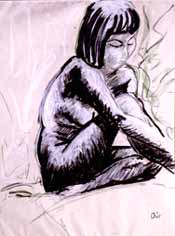
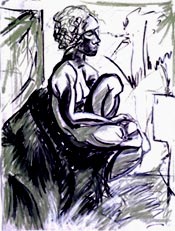
I was recently recalling to a friend how I first became interested in figure drawing and my first experience with drawing a nude model.
I was 17 and in my senior year of high school. I was taking a “Portfolio Development” class offered to high school students by a local university. It was very exciting at the time to be selected to participate in the course and I was never happier than when I was dropped off at the university on Saturday mornings to spend the entire day drawing.
We participated in various common drawing class exercises that we might not have had the chance to explore as in depth in our typical high school classes. We drew shoe’s, drapery, chairs, still life’s. Some weeks into the course we began drawing clothed models. I enjoyed all of it just because I loved drawing but also at the time I hadn’t found what it was that I had a passion for drawing. I just knew I loved to draw and that I wanted to go onto college for it and would figure out the rest when I got there.
After working with a clothed model for 2 weeks, the following week we came into class and took our seats in one of the 2 circles around model stands. The models came out as they did in the previous weeks, one male and one female each taking a model stand. Something was a little different this time, the models were dressed in robes.
When they got to their stands they simply dropped their robes. The room was ablaze in gasps, gulps and whispers. Mind you this was a room of about 30 high school seniors who had never seen a nude model before. We were not informed this would happen and needless to say we were all taken back quite a bit. Another boy from my school and I giggled to each other in awkward disbelief of the naked woman in front of us. One of the female students sitting in the circle around the male model actually fainted and made a loud crashing sound as she fell off her metal stool. She ended up being ok.
After a few minutes of commotion we all began to settle down and just draw. It didn’t take long for me to realize there was nothing sexual about what was happening. She wasn’t ‘naked’ at all she was ‘nude’. It also didn’t take me very long to realize how amazing it was to sketch the human form. It was an intensely complex challenge and I loved that about it. There was so much happening, much of it beneath the surface. The figure before me was a living breathing person, her figure and how she posed was a direct result of who she was. I was sitting sketching before one of the most beautiful and complex creations in all of existence, the human form. It was simply amazing.
I got it, I got it right away, and it was right then and has ever since been true love.
September 11, 2010 1:05 am
embedded by Embedded Video
YouTube Direkt Can’t See New York
 As I continually explore woman’s issues and look for ways in which my art and my life can be spent promoting healthier images and outlooks of women I am constantly looking into reasons and root causes for existing unhealthy attitudes towards women.
As I continually explore woman’s issues and look for ways in which my art and my life can be spent promoting healthier images and outlooks of women I am constantly looking into reasons and root causes for existing unhealthy attitudes towards women. There are times when standing among apparently infinite skyscrapers, apartment buildings, miles of concrete and steel or traveling through seamlessly interconnected subway systems, that it can seem easy to forget, New York City is a collection of islands. With the exception of the Bronx, New York City is surrounded by water on all sides. With all that water comes bridges! and lots of them. There are bridges made of stone, steel, concrete and wood. There are tall bridges, small bridges, long bridges and short bridges. Suspensions, trusses, arches, beams and combination’s of all kinds come together in a complexity almost unfathomable to bring the city together. All of those bridges have brought never ending inspiration to artists of all mediums including painters, photographers, architects, film makers, poets and many others.
There are times when standing among apparently infinite skyscrapers, apartment buildings, miles of concrete and steel or traveling through seamlessly interconnected subway systems, that it can seem easy to forget, New York City is a collection of islands. With the exception of the Bronx, New York City is surrounded by water on all sides. With all that water comes bridges! and lots of them. There are bridges made of stone, steel, concrete and wood. There are tall bridges, small bridges, long bridges and short bridges. Suspensions, trusses, arches, beams and combination’s of all kinds come together in a complexity almost unfathomable to bring the city together. All of those bridges have brought never ending inspiration to artists of all mediums including painters, photographers, architects, film makers, poets and many others.











